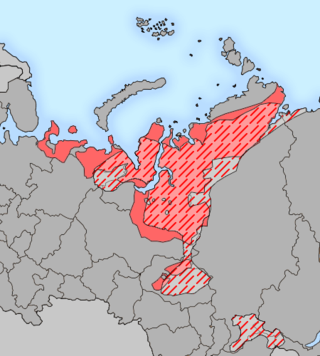Loading AI tools
Ethnolinguistic group indigenous to Siberia, Russia From Wikipedia, the free encyclopedia
The Samoyedic peoples (sometimes Samodeic peoples)[lower-alpha 1] are a group of closely related peoples who speak Samoyedic languages, which are part of the Uralic family. They are a linguistic, ethnic, and cultural grouping. The name derives from the obsolete term Samoyed used in Russian Empire for some of the Indigenous peoples of Siberia, see Samoyedic languages#Etymology for comments of the etymology.

| People | Language | Numbers[1] | Most important territory | Other traditional territories |
|---|---|---|---|---|
| Nenets | Nenets | 45,000 | Yamalo-Nenets Autonomous Okrug | Khanty-Mansi Autonomous Okrug |
| Enets | Enets | 200–300 | Krasnoyarsk Krai | |
| Nganasans | Nganasan | 900–1000 | Krasnoyarsk Krai | |
| Selkups | Selkup | 3,700 | Tomsk Oblast | Krasnoyarsk Krai |
| Kamasins | Kamassian (extinct) | 20[2][lower-alpha 2] | Krasnoyarsk Krai |
Traditionally, Samoyedic languages and peoples have been divided into two major areal groups: Northern Samoyedic (Nenets, Yurats, Enets, Nganasans), and Southern Samoyedic (Selkups) with a further subgroup of Sayan-Samoyedic (Kamasins, Mators) named after the Sayan Mountains. This classification does not reflect linguistic relations, being purely geographical.
The largest of the Samoyedic peoples are the Nenets, who mainly live in two autonomous districts of Russia: Yamalo-Nenetsia and Nenetsia. Some of the Nenets and most of the Enets and Nganasans used to live in the Taymyrsky Dolgano-Nenetsky District. Most of the Selkups live in Yamalo-Nenetsia, but there is also a significant population in Tomsk Oblast.
Seamless Wikipedia browsing. On steroids.
Every time you click a link to Wikipedia, Wiktionary or Wikiquote in your browser's search results, it will show the modern Wikiwand interface.
Wikiwand extension is a five stars, simple, with minimum permission required to keep your browsing private, safe and transparent.